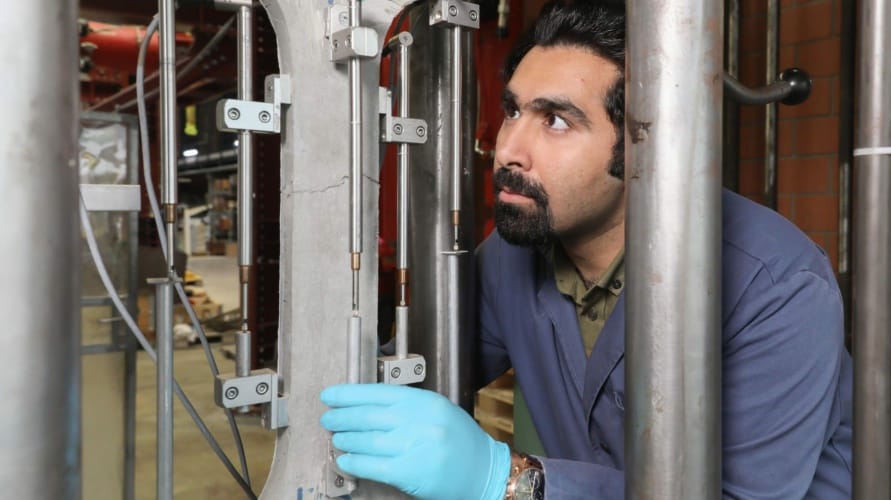If human history can be divided into ages named after materials, we could now be said to be in the steel-and-glass age. But the artefacts of our previous epoch, the concrete age, are still all around us, and concrete underpins the shining structures now being built. It also comprises much of our road and rail infrastructure, but concrete ages, and materials that were used in its formulation decades ago are now deteriorating. Unfortunately, concrete produces more carbon dioxide emissions in its production than almost any other material, so engineers are searching for a more sustainable way of maintaining existing concrete structures.

Further reading
- Recycled tyre fibres boost concrete fire resistance
- Tiny spheres offer potential solution to concrete problem
- Irradiated flakes of pulverised plastic strengthen concrete
_____________________________________________________________________ Hajiesmaeili is doing his PhD as part of the Swiss National Science Foundation’s national research programme Energy Turnaround, which focuses on the scientific and technological aspects of energy strategy changes. His project involved using a comprehensive packing model developed at EPFL’s Structural Maintenance and Safety Laboratory to formulate and test different mixtures of reinforced concrete components to find one which fits the criteria needed for repairing and maintaining concrete structures. These criteria include the mechanical properties of the dry concrete and the consistency of the wet mixture. “After three years of this trial-and-error, we finally found the right recipe – one that also meets stringent building standards,” says Hajiesmaeili. The crucial components of this new mixture replacing the steel reinforcing fibres with stiff polyethylene fibre which clings well to the cement mixture, while also replacing half of the cement powder with crushed limestone. “The trick was to find a material that’s very strong and produces the right consistency,” Hajiesmaeili explains. The Structural Maintenance and Safety Laboratory is headed by Prof Eugen Brühwiler, who has a 25-year interest in eco-friendly concrete and monitoring the condition of structures such as road and rail bridges. “With this material, we can add value to age-old structures by ensuring they will last for a long, long time,” says Brühwiler, whose lab has already overseen the structural reinforcement of more than 100 bridges and buildings in Switzerland. “This solution is also much more financially and environmentally sound than razing and rebuilding existing structures like bridges and historical monuments."





Poll: Should the UK’s railways be renationalised?
I think that a network inclusive of the vehicles on it would make sense. However it remains to be seen if there is any plan for it to be for the...